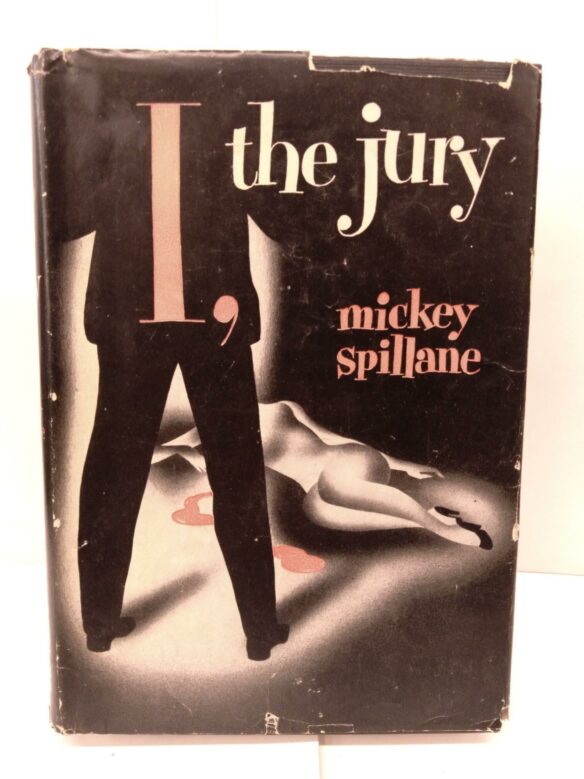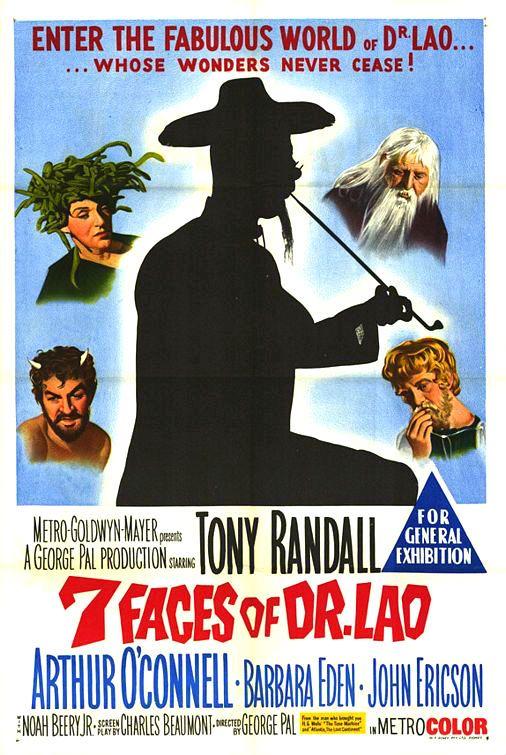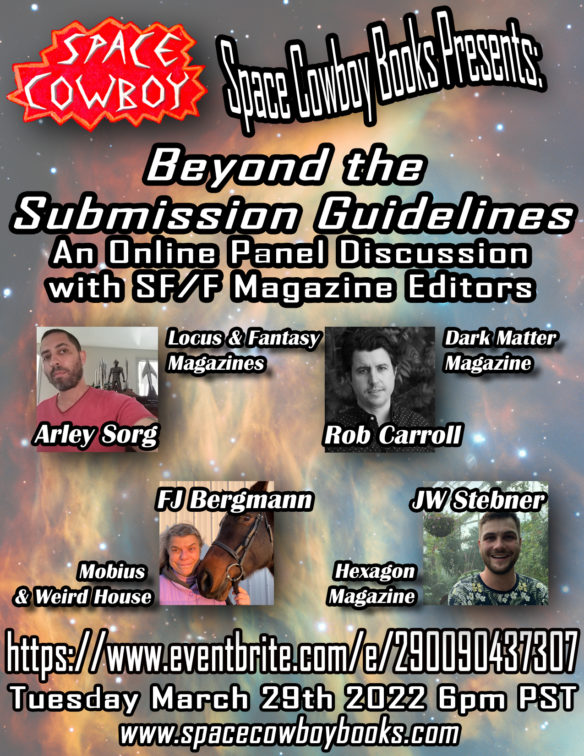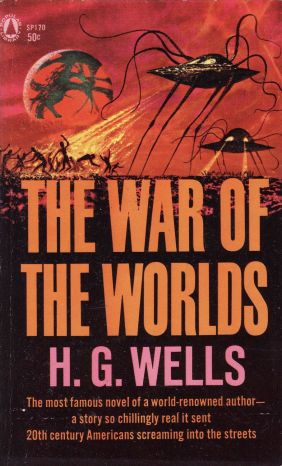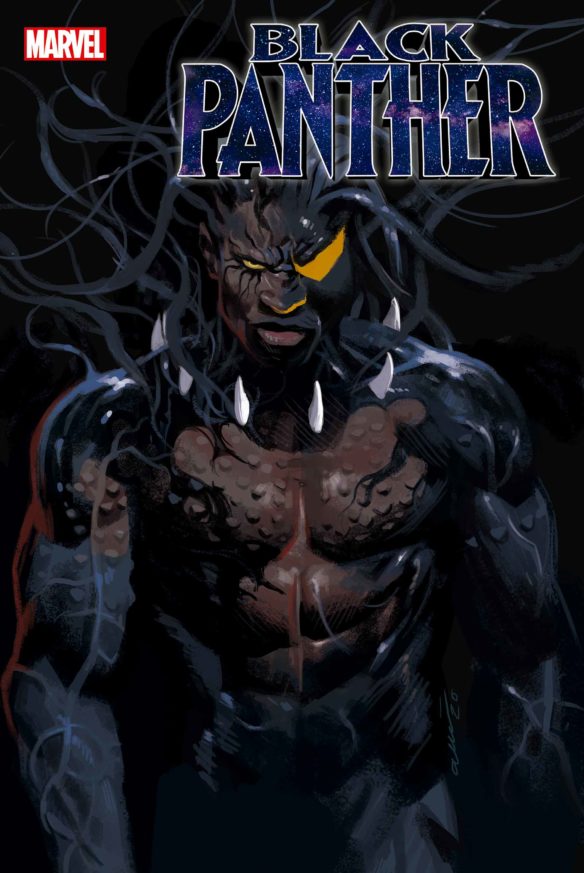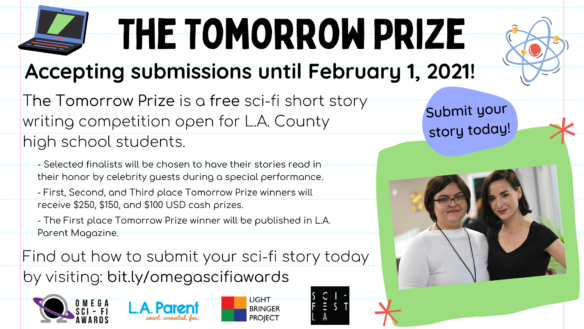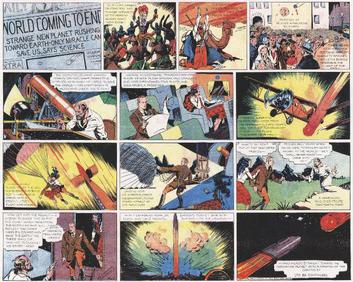(1) FUNERAL FOR CACHED WEBPAGES. Ars Technica says “Google will no longer back up the Internet: Cached webpages are dead”. That will make reporting controversial social media – where people sometimes take down posts that have attracted attention — rather harder.
Google will no longer be keeping a backup of the entire Internet. Google Search’s “cached” links have long been an alternative way to load a website that was down or had changed, but now the company is killing them off. Google “Search Liaison” Danny Sullivan confirmed the feature removal in an X post, saying the feature “was meant for helping people access pages when way back, you often couldn’t depend on a page loading. These days, things have greatly improved. So, it was decided to retire it.”
The feature has been appearing and disappearing for some people since December, and currently, we don’t see any cache links in Google Search. For now, you can still build your own cache links even without the button, just by going to “https://webcache.googleusercontent.com/search?q=cache:” plus a website URL, or by typing “cache:” plus a URL into Google Search. For now, the cached version of Ars Technica seems to still work. All of Google’s support pages about cached sites have been taken down….
(2) GERROLD Q&A. The Roddenberry Archive has released a two-part interview with David Gerrold.
The Roddenberry Archive presents an in-depth two-part conversation with award-winning science fiction novelist and screenwriter David Gerrold. During the conversation, Mr. Gerrold tells how, as a college student he broke into the television industry by writing a script for the original Star Trek, the classic episode, “Trouble With Tribbles.”. Mr. Gerrold speaks candidly of his sometimes-tumultuous relationship with Star Trek’s creator, the late Gene Roddenberry. He delves into his personal experiences in the making of the legendary series and of his pivotal role in the development of Star Trek: The Next Generation.
(3) DISCUSSING HUGO REFORM. Brad Templeton has distilled his comments about the Chengdu Worldcon Hugo problems and potential fixes into a single post: “The World Science Fiction convention/awards were attacked again. How can its unusual governance structure deal with this?” at Brad Ideas. Here are the final two sections:
Legal clarity
The organization also needs more legal clarity. The terms of the agreement between WSFS and the conventions it appoints need to be more explicit and clear. The current WSFS constitution says the WorldCon (the local convention entity) does most of what goes on at a convention, but the Hugos and Site Selection are officially the actions of WSFS, though it delegates the logistics and administration to the WorldCon. It’s a bit confusing and might not handle legal scrutiny well.
That WSFS is constitutionally the party that awards the Hugos, using the WorldCon as its agent, has many advantages for trademark law and also if WSFS wants to exercise authority over the Hugos and the people administering them. This should be made more clear.
Recommendations
- When all is done, there should at least be the appearance that they did not get away with it, to deter future corruption and censorship.
- The best solution is not a specific one, but a general one that allows the organization to respond quickly to problems and threats, without removing its intentional slow pace of change, and resistance to control by “SMOFs.”
- Auditing and more transparency are a good start, with an ethos of whistleblowing.
- Put term limits on all WSFS officials.
- Clarify and codify the structure of WSFS and the contracts.
- Pick one way or another to allow WSFS to respond immediately to threats. I like the idea of actions that can be reversed, but some path should be chosen.
- Do find some way to stop Hugo administration from being under the influence of censorship states, including China.
(4) CHENGDU WORLDCON ROUNDUP. [Item by Ersatz Culture.]
La Zi speaks again
Filers will recall that on January 24th, Mike ran an article by me that included an item about a bizarre Weibo post from Worldcon Vice-Chair and SFW editor La Zi. I did notice that that Weibo post disappeared not long after it was featured here, but I’d not checked on his account since then, thinking that he might understandably be taking a step back from social media, especially given all the ongoing Hugo stats report controversy.
Reader, I was sorely mistaken.
Amongst some fairly mundane reposts, a couple of his recent posts stood out to me. The most pertinent to File 770 is this short one from Wednesday January 31st, which is straightforward enough that I could just about understand it all, even with my meagre Chinese language skills. That text reads:
中国科幻迷应该永远记得本·亚洛这个名字。他是真正的好人,也是真正的国际主义者。
which Google Translate renders as follows (surname error corrected):
Chinese science fiction fans should always remember the name Ben Yalow. He is a truly good man and a true internationalist.
Here’s a screenshot of the Weibo post – including a similar translation from Alibaba Cloud – just in case it also disappears.

Note to readers: the censuring of Ben Yalow (and Chen Shi, and Dave McCarty) occurred on the previous day, the 30th – although obviously time zone differences make things a bit more complicated with regard to recording what happened when.
The second post that I would like to bring to your attention is a couple of days older, published on Monday the 29th. The Chinese text reads:
应该要求美国尊重得克萨斯(孤星)共和国人民的民主诉求,承认其独立共和国身份。可以考虑签订《与得克萨斯(孤星)共和国关系法》,并提供防卫目的的武器贸易和军事援助,目的是保护得克萨斯不会因为强大北方邻国的觊觎而被掠夺珍贵的油气资源,任何企图以非和平方式来决定得克萨斯共和国前途之举——包括使用经济抵制及禁运手段在内,将被视为对东太平洋地区和平及安定的威胁,联合国应该介入。
Google Translate renders this as follows (text left unaltered):
The United States should be required to respect the democratic aspirations of the people of the Republic of Texas (Lone Star) and recognize its identity as an independent republic. Consider signing the “Relationships with the Republic of Texas (Lone Star) Act” and provide arms trade and military assistance for defense purposes. The purpose is to protect Texas from being plundered of precious oil and gas resources due to the covetousness of its powerful northern neighbors. Any attempt to use Non-peaceful measures to determine the future of the Republic of Texas, including the use of economic boycotts and embargoes, will be considered a threat to peace and stability in the Eastern Pacific region, and the United Nations should intervene.
Here’s another screenshot for posterity.

Whilst many may presume that this second post indirectly refers to some other place, please note that on January 30th, Newsweek reported that Chinese social media was full of stories about the US being in a state of civil war. A couple of extracts:
As the battle of wills over immigration continues between the White House and Texas Gov. Greg Abbott, a parallel debate is happening in China, where trending social media posts are backing the Lone Star State’s right to secede from the United States.
On China’s X-like microblogging site Weibo, accounts with more than a million followers were spreading misinformation this week claiming Texas had entered a “state of war” with the federal government. In the comment sections, Chinese netizens met the news with excitement and glee…
“If the U.S. really pushes Texas back, then it will be great fun,” the user said. “I hope both sides will not be cowardly and that they will fight to the end!”
In a follow-up post on Tuesday, the user said he was inspired to “definitely contribute money and effort” to support the cause against America’s “imperialist oppression” in Texas and elsewhere in the world.
There’s further discussion of this on Reddit’s /r/China, which is where I’d previously heard about this meme.
Note to readers: per Fancyclopedia:
Ben [Yalow] shocked most of fandom when he moved to Texas in 2021.
(5) GLOBETROTTER. Australian fan Robin Johnson has been writing posts for The Little Aviation Museum “Reading Room”. Here’s an example published in 2022: “1997 – A Year of Sightseeing and Science Fiction”.
I have been reminded by a Facebook post by astronomical artist Don Davis of the Hale-Bopp comet of 1997, a year that was a red-letter one for me. As a pensioner of BOAC (now British Airways) I was able to fly on a stand-by basis on their flights (and some other airlines). Flights from Australia to England were operating with one stop using the latest Boeing 747-400s.
I visited my father in England in January for his birthday, and on the way home to Tasmania attended two regional science fiction conventions in the U.S.A. and one in Perth – Arisia in Boston, Chattacon in Chattanooga, and Swancon in Perth.
In late March I set off to England again, attending a Con in Wellington, New Zealand en route, visited friends in the Los Angeles area, and took advantage of the fact that BOAC had recently taken over British Caledonian Airways to fly to London from Dallas-Ft Worth by DC-10.
Comet Hale-Bopp had not yet been easily visible in the Southern hemisphere when I left home, but was spectacular in the Northern Hemisphere. Sitting aboard the flight next to a flight crew member, we talked about the comet – and soon I was invited onto the flight deck. The DC-10 has spectacularly large windows, and standing behind the Captain as we overflew Greenland, on a moonless night: the view was unique. The comet had just passed its closest point to Earth, and the tail was prominently on view to the naked eye, and there could not have been a better viewpoint….
(6) CHRISTOPHER PRIEST OBITUARIES.
John Clute’s “Christopher Priest obituary” ran in the Guardian today.
The novelist Christopher Priest, who has died aged 80 after suffering from cancer, became eminent more than once over the nearly 60 years of his active working life. But while he relished success, he displayed a wry reserve about the ambiguities attending these moments in the limelight.
In 1983 he was included in the Granta Best of Young British Novelists, a 20-strong cohort, most of them – such as Martin Amis, William Boyd, Kazuo Ishiguro, Ian McEwan, Salman Rushdie, Graham Swift and AN Wilson – significantly younger than Priest, whose career had begun almost two decades earlier, and who had at least 15 books and 50 stories in print by the early 80s. He clearly felt that it was not so much the quality of his work that delayed his “promotion” to the literary establishment, but his reluctance to deny, when asked, that he wrote science fiction.
His large body of work never fitted easily into any mould. Only in recent years has it become widely understood that the sometimes baffling ingenuity and thrust of his fiction has been of a piece, no more detachable into convenient genres than, say, Amis’s or Ishiguro’s tales of the fantastic….
Paul Kincaid’s reminiscences about “Chris” appear at Through the dark labyrinth.
The 1976 Eastercon was held in the rather grim surroundings of Owen’s Park student accommodation, Manchester. It was my third convention and I still wasn’t used to the fact that mere mortals could mix freely with actual authors. So I was very nervous approaching a small group in the bar. My target was a tall, thin guy wearing blue denim jacket and jeans and smoking with a long cigarette holder (later in the convention, Lee Montgomerie would win the fancy dress for the best costume as an author; she was wearing almost exactly the same outfit). This was Christopher Priest and I had just bought the paperback of his latest novel, The Space Machine. I asked for an autograph. He pointed to someone at the other side of the bar. “See that guy? Andrew Stephenson. He did the illustrations. Why don’t you get him to sign it?” To this day, that paperback is one of the few Chris Priest novels I own that isn’t signed by the author.
Later that day I was standing at the back of a programme item. Chris was on the panel, smoking with that long holder, and I began to notice the wild figure of 8 shape that the glowing end of the cigarette was making, and I realised his hand was shaking. He was more nervous than I had been.
Years go by. A BSFA meeting in London at a pub near Hatton Garden. I’m propping up the bar with Chris. I mention that I’ve just reviewed his latest novel, The Glamour, and I thought it was really good except that the ending didn’t quite work. Two days later I receive a thick envelope in the post. It was the typescript for a revised ending of The Glamour, the first of countless revisions of the novel that was so good but so impossible to end….

(7) MEMORY LANE.
[Written by Cat Eldridge.]
1940 — The Adventures of Superman on radio

The Adventures of Superman is a long-running radio serial. Initially, the show, which aired from 1940 through to 1951, was syndicated through the Mutual Broadcasting System’s cornerstone station, WOR in New York, subsequently taken up by the Mutual network, and finally by ABC. In the beginning there were three episodes a week of 15 minutes in length. When in 1941 they began making five episodes a week, some stations stayed with the three-a-week format. Late in the show’s run episodes ran 30 minutes.
The year after the comic strip debuted four audition radio programs were prepared to sell Superman as a syndicated radio series. It took very little time to have WOR sign the contract to do this, so it went on the air less two years after the comic strip launched.
The original pitch was that the audience was going to be predominantly juvenile so the scripts had to be lighthearted with the violence toned down. The performers were chosen with that mind, so they cast Bud Collyer in the Clark Kent / Superman role and Joan Alexander as Lois Lane. She also voiced that role in animated Fleischer Superman shorts.
The continuity of the series is significantly different than the series as Krypton is located on the far side of the sun, and on the journey to Earth, Kal-el becomes an adult before his ship lands on Earth., so he is never adopted by the Kents but immediately begins his superhero / reporter career.
This serial is responsible for the introduction of kryptonite to the Superman universe. Daily Planet editor Perry White and Jimmy Olsen who was a copy editor originated in the serial as well.
As a gimmick that paralleled the Superman comic and which the audience adored, they kept the identity of Collyer as the character a secret for the first six years, until when Superman became the character in a radio campaign for racial and religious tolerance and Collyer did a Time magazine interview about that campaign.
Kellog Company was the sponsor at least initially with the product being its Pep cereal. It was sponsored Tom Corbet, Space Cadet.
(8) COMICS SECTION.
- The Far Side captures a photo op with visitors who aren’t from around here.
- Pearls Before Swine finds an unexpected angle to library censorship.
- Six Chix meanwhile shows the challenges of a bookstore customer.
(9) EUROSTAR. The Guardian looks ahead to issues with cross-Channel train travel. “Eurostar may cap services due to post-Brexit biometric passport checks, says station owner”.
Eurostar could be forced to limit passenger numbers travelling from St Pancras each day under post-Brexit plans to bring in biometric border controls later this year, the owner of the station has warned.
HS1, the owner and operator of the line and stations between London and the Channel tunnel, has raised concerns that planning for new Entry/Exit System (EES) checks at the London rail station are “severely inadequate”, and would lead to long delays and potential capping of services and passenger numbers.
The EES requires citizens from outside the EU or Schengen area to register before entering the zone.
This will replace the stamping of passports for UK travellers, and instead require passengers to enter personal information and details about their trip, as well as submitting fingerprint and facial biometric data.
It has been mooted that the new checks will come into force in October but the implementation has been delayed several times in recent years because the infrastructure was not ready.
HS1 has now raised several concerns to MPs around St Pancras’s ability to accommodate the changes, predicting “unacceptable passenger delays”.
It said only 24 EES kiosks had been allocated by the French government, despite modelling suggesting that nearly 50 would be needed at peak times….
(10) WOULD YOU CARE FOR A BEVERAGE? Comics on Coffee has enlisted this couple to share their “Mad Love for Raspberry Coffee”.
DC & Comics On Coffee have joined forces to make your mornings more action packed with great tasting coffee! It’s time to get crazy in love with this Valentine’s Day Special Edition Coffee. A smooth, raspberry flavored coffee.

(11) VIDEO OF THE DAY. George R.R. Martin shares as much as he can about the films they’re making based on the late Howard Waldrop’s stories in “Come to the Pulls” at Not A Blog.
…COOTERS was just the beginning, though. Only the first of a series of short films — and one full-length feature, we hope — we have been making, based on some of Howard’s astonishing, and unique, stories. He wrote so many, it was hard to know where to start, but start we did, and I am pleased to say that we have three more Waldrop movies filmed and in the can, in various stages of post production. Some of you — the lucky ones — will get a chance to see them this year, at a film festival near you. As with COOTERS, we’re taking them out on the festival circuit.
First one out of the chute will be MARY-MARGARET ROAD GRADER. We were able to screen a rough cut for Howard just a few days before his death. I am so so so glad we did. And I am thrilled to be able to report that he loved it.
We can’t show it to the world yet. But here’s a trailer, to give you all a taste.
[Thanks to SF Concatenation’s Jonathan Cowie, Ersatz Culture, Daniel Dern, Steven French, Mike Kennedy, Andrew Porter, John King Tarpinian, Chris Barkley, and Cat Eldridge for some of these stories. Title credit belongs to File 770 contributing editor of the day Jeff Warner.]

